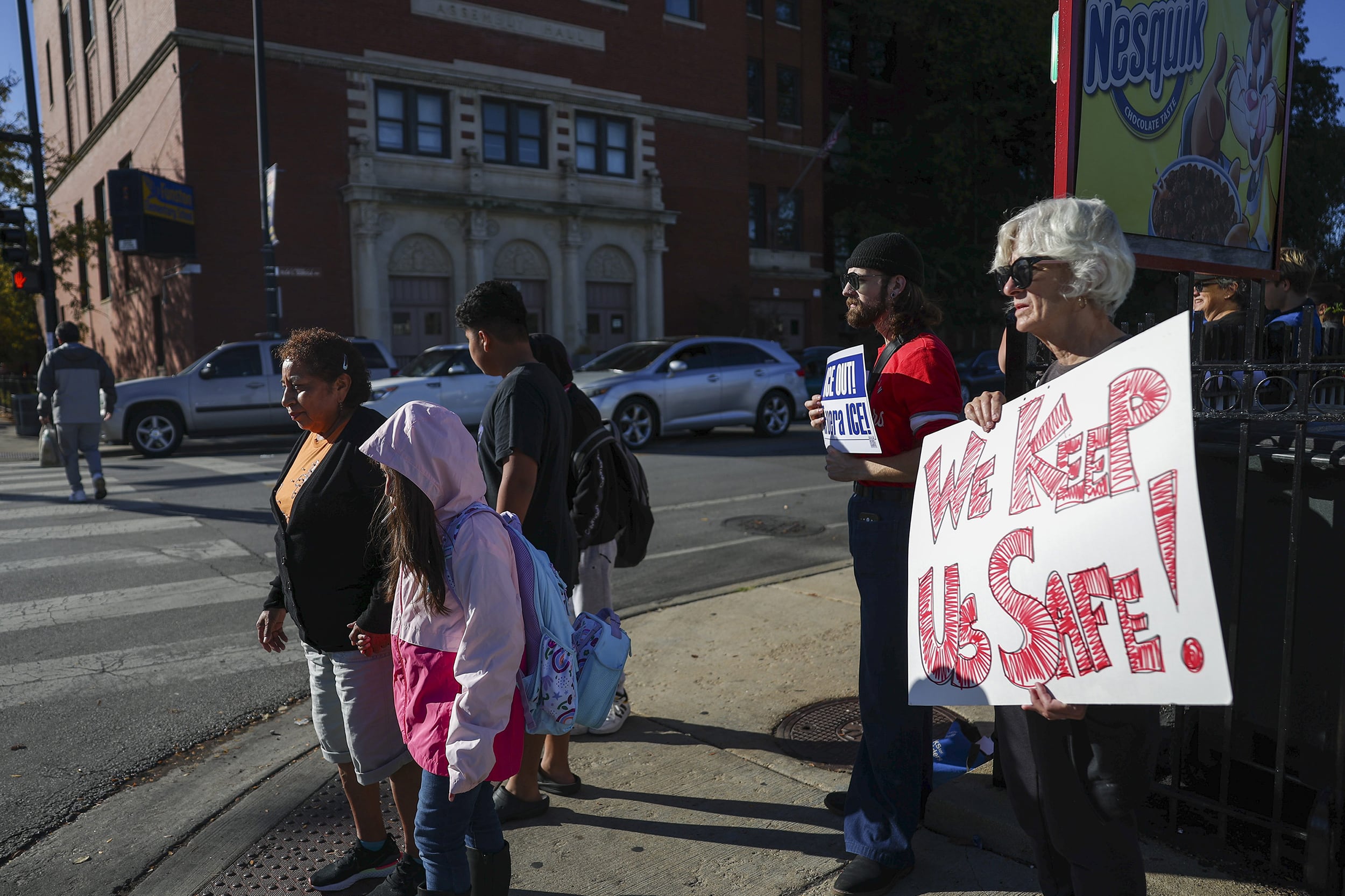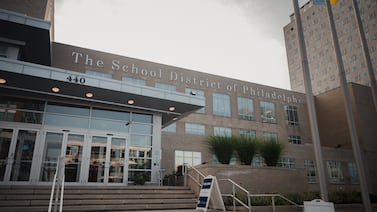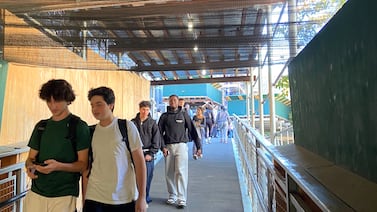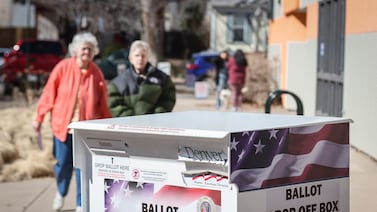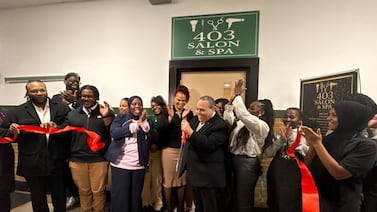Sign up for Chalkbeat Chicago’s free daily newsletter to keep up with the latest news on Chicago Public Schools.
At Mather High School in Chicago’s West Ridge neighborhood, music teacher Eriq Vazquez said as many as 10 of his students have told him they were staying home because of Operation Midway Blitz — the Trump administration’s immigration crackdown in the city.
Some students said they’re afraid of being picked up by masked U.S. Immigration and Customs Enforcement, or ICE, agents, he said. Others are babysitting younger siblings who are being kept home or are working extra shifts because their parents, who are undocumented, fear going to work.
In the four weeks since the start of the high-profile immigration operation, attendance at the 1,662-student school dropped by 4 percentage points — nearly three times the attendance drop citywide, according to data obtained by Chalkbeat through an open records request.
Similar attendance declines are playing out in other immigrant and Latino enclaves around the city, data show. Many families are scared of going to school as they curtail activities like grocery shopping or going to restaurants to avoid being detained by federal agents, according to nearly 20 interviews with parents, educators, public officials, and community organizers.
“It’s generated a great level of fear within families,” said Jeff Bartow, executive director of the Southwest Organizing Project, a community-based organization that operates parent mentor programs in 19 CPS schools.
“Do I take my child to and from school, or do I find someone else they can walk with?” he said, describing the questions he’s heard from parents. “When do I come, when do I go? ”
The fear of immigration enforcement is especially intense during school dropoff or pickup, with multiple people comparing it to the anxiety of leaving home during the COVID-19 pandemic. School staff and district officials are trying to calm fears and make sure immigrant students don’t fall behind. But there are signs that many students — like those in Vasquez’s class at Mather — are staying home.
During the first month of school this year, student attendance across all CPS schools was about the same as it was last year, according to data Chalkbeat obtained through a Freedom of Information Act request and analyzed.
But in the second month, after the Sept. 8 announcement of the immigration sweeps, attendance rates dropped by 1.25 percentage point — more than double the drop in attendance between the first and second month of school the last two years, according to Chalkbeat’s analysis.
What’s more: 38 of Chicago’s 77 official communities saw attendance drop more sharply than the district; about 40% of those are home to large immigrant or Latino populations.
CPS officials said the attendance rate among English language learners, many of whom are immigrants, also dropped by 1.3 percentage points during the first nine weeks of this school year compared to the same period last year.
The immigration crackdown in Chicago has garnered headlines across the country for federal agents’ aggressive tactics and military-like scenes playing out in residential neighborhoods. U.S. Border Patrol Chief Greg Bovino has drawn scrutiny from a federal judge over tear-gas usage and told WBEZ some of the agency’s arrestees were targeted, in part, based on “how they look.”
Some students have protested against ICE. And a few immigration enforcement actions involved young people, including two high schoolers being detained and released by federal immigration agents last week, according to local elected officials.
Other U.S. school districts are reporting attendance drops coinciding with Trump’s second term and more aggressive immigration enforcement. A recent Brown University study found “significant” drops in average monthly attendance and increases in chronic absenteeism among Connecticut’s English learners since Trump’s inauguration in January. A Stanford University study found an average 22% increase in student absences after the inauguration in a California region with many Latin American immigrants.
Asked to respond to criticism of ICE agents and the idea that their presence could impact student attendance, an ICE spokesperson said, “The reality is simple: if you are not breaking the law, you have nothing to fear. If you are, the responsible choice is to self-deport rather than continue placing your children in harm’s way and disregarding their well-being.”
Several Chicago Board of Education members are advocating for a remote learning option in response to worries about student attendance, which CPS has so far declined to do.
Vazquez said he tells students that school is the safest place to be and has sometimes suggested they make a plan, such as walking to Mather with a friend.
“I haven’t come up with anything that can totally stomp out those fears,” said Vazquez, the music teacher. “I’m not a parent, but maybe if I was, I would be thinking twice about sending my kid to school, especially if they had my skin color.”
Several Latino communities saw school attendance drop more sharply after Operation Midway Blitz started
Of the 38 communities seeing bigger attendance drops than the rest of the district after Operation Midway Blitz was announced, include Belmont Cragin, Albany Park, Pilsen, Little Village, and Back of the Yards — all places where ICE activity has been reported.
Many of the immigrant and Latino communities that saw drops in attendance during the second month of school this year also saw attendance decrease during the same period last year. Just three saw attendance drop by as much as they did this year.
The absences raise fresh concerns about student learning and mental health, especially for English learners, who on average perform behind their peers academically.
Mary Ann Fergus, a spokesperson for CPS, said the district told school staff and principals in September that they can allow excused absences for “circumstances that cause reasonable concern for a student’s mental, emotional, or physical well-being.”
Under this policy, students can make up missed work, and “teachers are instructed not to penalize students for excused absences related to these concerns,” Fergus said.
Chicago schools encourage attendance for immigrant students but acknowledge fears
Alejandra, a mother of three kids in Pilsen who asked that her full name and immigration status be concealed out of fear of being targeted by federal agents, has lived in the U.S. for 18 years, most of that in Pilsen, one of the city’s Latino strongholds.
Pilsen is in a community area that saw attendance drop by slightly more than the drop citywide after Operation Midway Blitz began. Alejandra said she already pulled her kids out of outdoor sports in the fall fearing potential run-ins with ICE agents. She and other neighborhood parents she knows are hesitant to send their kids to school, she said through a Spanish translator.
Alejandra’s children are U.S. citizens, but she said she’s still worried given reports of citizens being detained. Her teenage daughter goes to school and an internship by herself.
“My fear is that one day my daughter doesn’t come home,” she said through tears.
About 10 miles northwest, in Chicago’s Belmont Cragin neighborhood, the attendance rate at Henry Lloyd Elementary School, which is usually stable this time of year, dropped by nearly two percentage points during the second month of school – after immigration enforcement ramped up – compared to the first, data show.
Residents and community groups have reported seeing ICE agents on the Northwest Side since Operation Midway Blitz began, including at a Home Depot in Belmont Cragin, an area that saw the attendance drops larger than schools citywide.
Laurel Salgado, Lloyd’s principal, said he had heard about ICE activity about one-and-a-half blocks away from the school. The possibility of encounters with ICE is scaring parents, he said.
One mother told Salgado that relatives or neighbors help her with tasks that require leaving her home, such as grocery shopping. Salgado explained that it’s important for her kids to attend school. She responded, “‘You don’t understand my situation … because you’re not undocumented,’” Salgado recalled.
Some parents and teachers push for virtual learning, but CPS is hesitant
Salgado, who just celebrated securing a Spanish dual language program at Lloyd, is exploring ways to encourage fearful parents to send their kids to school, such as sending staff to help pick up or drop off students.
“We don’t want kids to fall behind,” Salgado said.
Alejandra, the mom from Pilsen, said she planned to ask CPS for a remote learning option so that kids can receive instruction from home and not get marked absent if their parents are fearful of taking them. Other parents and some school board members have called for the same.
The Chicago Teachers Union, which has advocated against aggressive immigration enforcement, has asked the district to open more seats in its Virtual Academy.
In a statement to reporters, the district said the Virtual Academy serves about 500 students who have specific medical needs and provides nearly 3,000 others with part-time accelerated courses, such as algebra.
“While CPS can explore expanding this model in the future, it would not effectively meet the needs of English Learners or other populations most affected by federal immigration activity,” Fergus said.
CPS would otherwise need the governor to declare an emergency, similar to the pandemic, to allow a remote learning option for other students, Fergus said. She added that remote learning “brought real challenges for our students — from learning loss to increased feelings of isolation and stress” during the pandemic.
In Chicago’s historically Mexican-American neighborhood of Little Village, mom Ana Espitia asked her son recently if any of his classmates have been absent. The kids he named were mostly newcomer immigrants, she said.
Espitia hopes to create a “walking train” at her school, where parents who feel comfortable can escort kids of parents who are afraid of being stopped by ICE.
Other schools have created their own walking trains. Many also have staff and volunteers who stand outside during arrival and pickup with whistles to alert people about possible ICE presence.
One of those schools is Mather. Over the past two months, Vazquez, the Mather music teacher, said he and more than a dozen of his colleagues have distributed information to students and families about their rights with immigration agents and volunteered their time to monitor for ICE activity during arrival and dismissal.
About a month and a half ago, two Mather students heading to school were briefly stopped by federal immigration agents as they left the shelter they live in, Vazquez said. Staff wondered if telling the school community would cause panic. But they also wondered what they could do to prevent other students from being stopped by federal agents.
The answer, Vazquez said, is “not a lot, which makes it really, really hard.”
After the incident happened, he recalled, many teachers stopped their lessons and went over “Know Your Rights” slides with their students instead.
Reema Amin is a reporter covering Chicago Public Schools. Contact Reema at ramin@chalkbeat.org.

